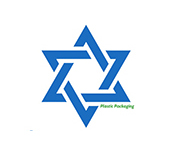Stretch Wrap- A highly stretchable plastic film commonly made from Linear low-density polyethylene (LLDPE) wrapped around items. The elastic recovery keeps the products tightly bound.
Stretch film is used to wrap products on pallets and secure them to each other and the pallet. Helping to reduce product loss, discourage load tampering, and reduce worker injury. We explain in further detail in our blog post What is stretch film used for. There are a variety of widths, thicknesses, and types of stretch film.
Below is a breakdown of the two most commonly used extrusion processes of stretch film. Extrusion is the manufacturing of stretch film and a variety of other flexible plastic products. Visit our blog for further details about the extrusion process.
Cast Stretch Wrap
Cast Stretch Wrap also called cast stretch wrap, is manufactured using a cast extrusion process. The Cast extrusion process is a continuous process by which a thermoplastic material is melted and extruded through a flat die onto a chill roll, where it is quenched and re-solidified. This process allows the Cast stretch film to have excellent clarity, require less force to stretch, increased tear resistance, unwind quietly from machines, and offer a superior cling. There are both machine grade and hand grade cast stretch film available.
Advantages of Cast Stretch Film- Less expensive than blown stretch film, due to reduced manufacturing costs cast stretch film is more popular. Increased clarity allows users to see wrapped products. Cast stretch wrap unwinds quietly compared to blown stretch wrap. Cast stretch film offers two-sided cling that allows the wrap to stay securely packaged.
Disadvantages of Cast Stretch Film- Does not offer the load/holding power blown stretch film provides. Cast stretch film has less memory and tear resistance than blown stretch film.
Blown Stretch Wrap
Blown Stretch Wrap also referred to as blown stretch wrap, is manufactured using the blown extrusion process. This Plastic melt is extruded through an annular slit die, usually vertically, to form a thin-walled tube. Air is introduced from an opening in the center of the die to blow up the film tube like a balloon. On top of the film tube, an air ring blows onto the film to cool it. This process allows blown film to be more robust and more resilient than cast film. The higher mechanical properties of blown film typically allow a more significant load holding power.
Advantages of Blown Stretch Wrap- Offers higher load and stretch capacity. Blown stretch film is a premium quality film. Blown stretch film has a higher degree of memory once stretched, allowing product loads to stay better secured. Higher tear resistance is an advantage when securing loads with sharp edges.
Disadvantages of Blown Stretch Wrap- Higher cost due to the manufacturing process. The blown stretch wrap has poor clarity due to crystallization in the manufacturing process. Blown film is also noisy when unwound from rolls.
Posted By Thuận Minh Phát








